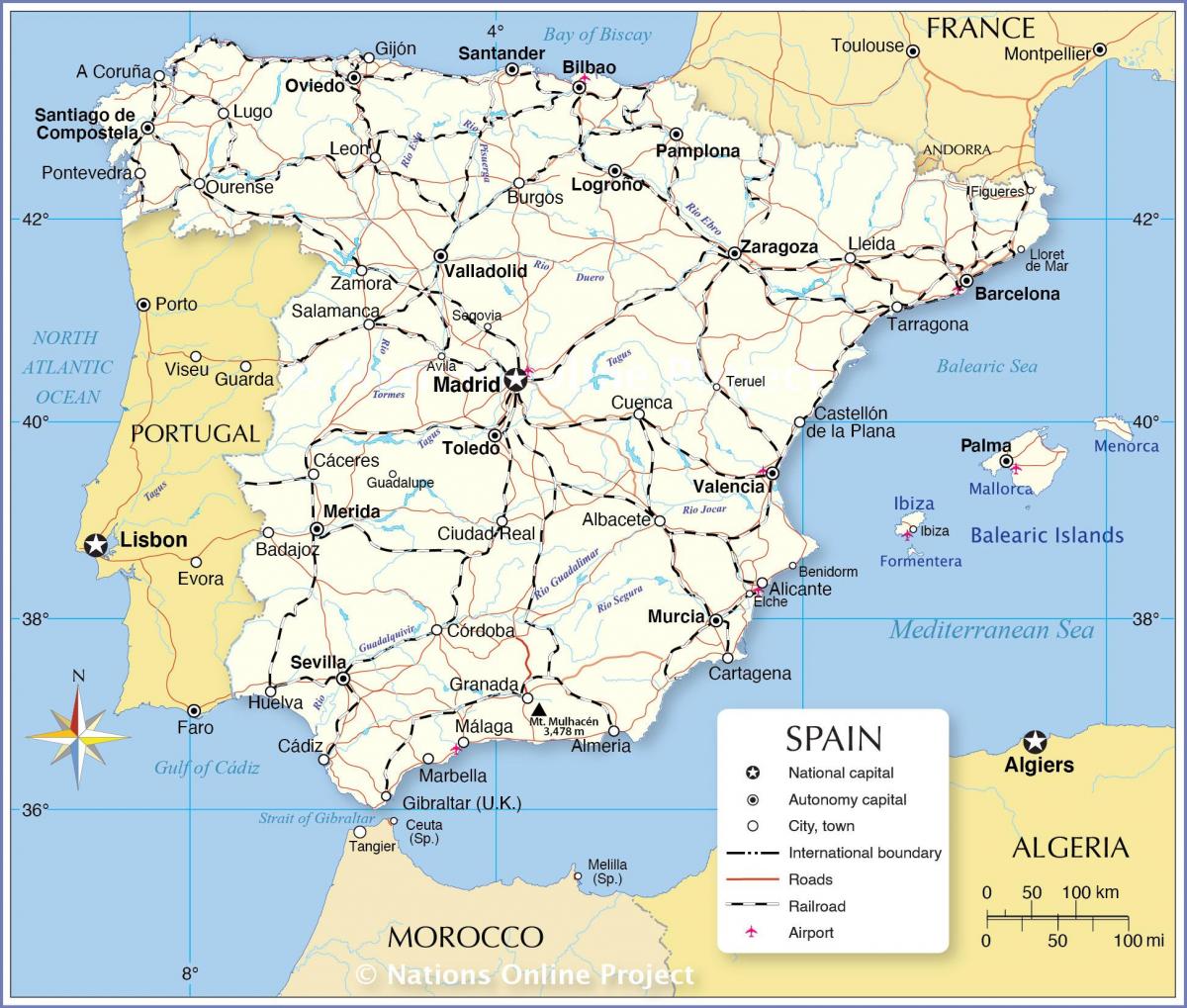search
Spain map
Map showing Spain. Spain map (Southern Europe - Europe) to print. Spain map (Southern Europe - Europe) to download. Spain is openly multilingual, and the constitution establishes that the nation will protect "all Spaniards and the peoples of Spain in the exercise of human rights, their cultures and traditions, languages and institutions. Spanish (español) — officially recognized in the constitution as Castilian (castellano) — is the official language of the entire country as its shown in Spain map, and it is the right and duty of every Spaniard to know the language. The constitution also establishes that "all other Spanish languages" — that is, all other languages of Spain — will also be official in their respective autonomous communities in accordance to their Statutes, their organic regional legislations, and that the "richness of the distinct linguistic modalities of Spain represents a patrimony which will be the object of special respect and protection."
Spain has a number of descendants of populations from former colonies (especially Equatorial Guinea) and immigrants from several Sub-Saharan and Caribbean countries have been recently settling in Spain as its mentioned in Spain map. There are also sizeable numbers of Asian immigrants, most of whom are of Chinese, Indian, Filipino, Middle Eastern and South Asian origins; the population of Latin Americans is sizable as well and a fast growing segment. Other growing groups are Britons, 760,000 in 2006, Germans and other immigrants from the rest of Europe. The arrival of the Gitanos, a Romani people, began in the 16th century; estimates of the Spanish Gitano population fluctuate around 700,000. The Mercheros (also Quinquis) are a minority group, formerly nomadic, that share a lot of the way of life of Gitanos. Their origin is unclear.
The Spanish Constitution of 1978, in its second article, recognises historic entities ("nationalities", a carefully chosen word in order to avoid the more politically charged "nations") and regions, within the context of the Spanish nation. For some people, Spain identity consists more of an overlap of different regional identities than of a sole Spanish identity as you can see in Spain map. Indeed, some of the regional identities may even conflict with the Spanish one. Distinct traditional regional identities within Spain include the Basques, Catalans, Galicians and Castilians, among others.
In 2008, Spain granted citizenship to 84,170 persons, mostly to people from Ecuador, Colombia and Morocco. A sizeable portion of foreign residents in Spain also comes from other Western and Central European countries. These are mostly British, French, German, Dutch, and Norwegian. They reside primarily on the Mediterranean coast and the Balearic islands, where many choose to live their retirement or telecommute. Substantial populations descended from Spanish colonists and immigrants exist in other parts of the world, most notably in Latin America as its shown in Spain map. Beginning in the late 15th century, large numbers of Iberian colonists settled in what became Latin America and at present most white Latin Americans (who make up about one-third of Latin America population) are of Spanish or Portuguese origin.
Research about quality of life by the Economist Intelligence Unit quality of life survey placed Spain as the country among the top 10 best quality of life in the world for 2005, ahead of other economically and technologically advanced countries like France, Germany, the United Kingdom and South Korea as its mentioned in Spain map. Before the collapse of the real estate boom there had been a corresponding rise in the levels of personal debt as prospective home owners struggled to meet asking prices. The average level of household debt tripled in less than a decade. This placed great pressure upon lower to middle income groups; by 2005 the median ratio of indebtedness to income had grown to 125%, due primarily to expensive boom time mortgages.


